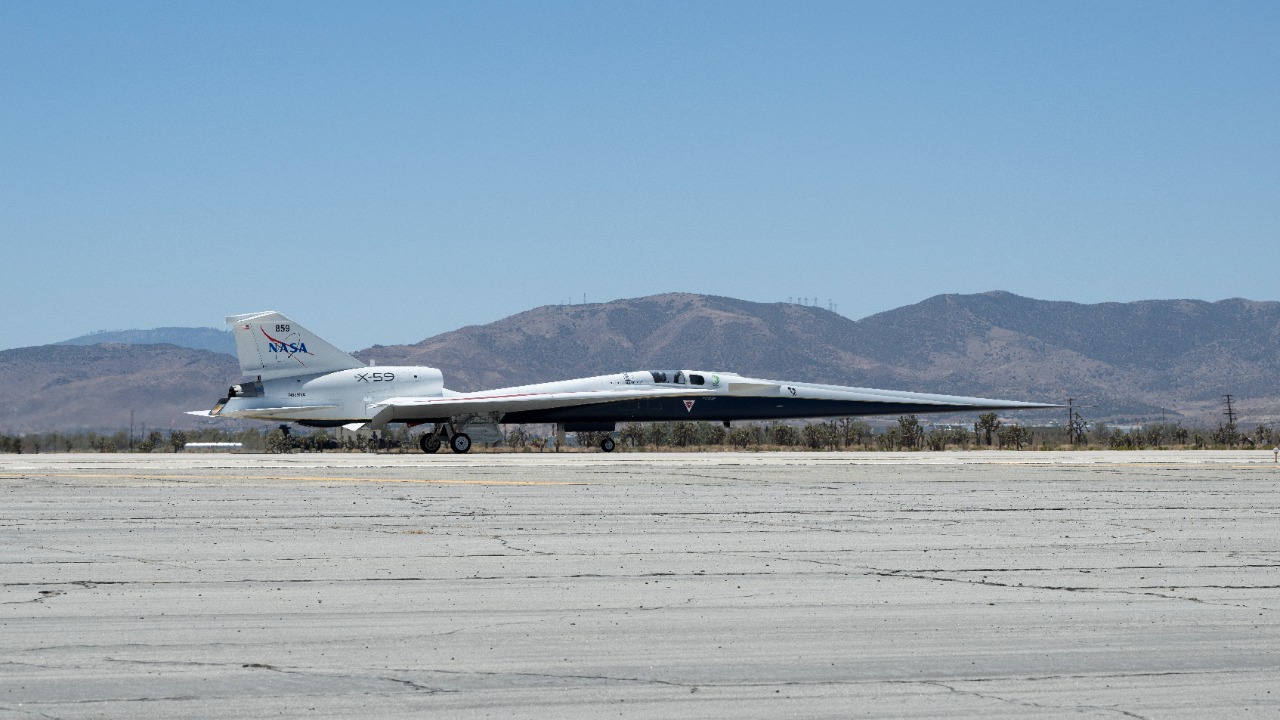
On October 30, 2025, NASA’s X-59 supersonic jet, a 100-foot aircraft developed at a cost of $247 million, took to the skies for the first time. This marked a significant milestone in the development of quiet supersonic technology designed to minimize sonic booms. The X-59, also known as the “Son of Concorde,” aims to revolutionize commercial aviation by enabling faster transatlantic travel, potentially covering the distance from London to New York in under 4 hours while producing sound levels no louder than a distant thunderclap.
Development Background of the X-59
The X-59 is the result of a collaboration between NASA and Lockheed Martin on the QueSST (Quiet Supersonic Technology) mission. This initiative was launched to address the sonic boom challenges that grounded the original Concorde. The project’s goal is to validate low-boom flight data for future regulations, with testing phases planned over multiple years following the initial rollout. A significant portion of the project’s funding, specifically $247 million, was allocated for the X-59’s construction and the integration of advanced shaping to reduce noise [source].
Design Features Enabling Supersonic Speed
The X-59’s design features an elongated fuselage and a unique nose shape, measuring 100 feet in total length. These design elements help distribute shockwaves for quieter performance at supersonic speeds. The aircraft is powered by a single engine and has specialized air intakes to achieve efficient thrust without excessive boom generation. Additionally, the X-59 lacks a traditional horizontal stabilizer, an aerodynamic innovation aimed at optimizing speed while maintaining stability [source].
Expected Top Speed and Performance Metrics
The X-59’s targeted top speed is Mach 1.42, equivalent to approximately 960 mph at cruising altitude. This speed is a benchmark for quiet supersonic travel. It enables the projected London to New York flight time of under 4 hours, significantly cutting current subsonic durations. Planned test flights will verify these speed capabilities while measuring sonic boom intensity on the ground [source].
The Historic First Flight Milestone
The X-59’s maiden flight on October 30, 2025, lasted about 45 minutes and reached an altitude of 10,000 feet from Lockheed Martin’s Skunk Works facility in Palmdale, California. The flight’s focus was on basic systems checks rather than full supersonic acceleration, with NASA pilots reporting smooth handling. This event marked the first public demonstration of the “Son of Concorde” design in action [source].
Potential Impact on Future Air Travel
Successful X-59 tests could lead to FAA approval for overland supersonic routes, transforming global travel efficiency. Passengers would benefit from reduced flight times for long-haul routes like London to New York, potentially under 4 hours. However, environmental and regulatory hurdles, such as noise limits comparable to a distant thunderclap, must be addressed to gain public and governmental support [source].
Comparisons to the Original Concorde
The X-59’s quiet supersonic approach contrasts with the Concorde’s louder sonic booms that restricted it to overwater flights. In terms of size and cost, the X-59’s 100-foot length and $247 million price tag are smaller than the Concorde’s larger scale and higher operational expenses. Both aircraft aim for transatlantic crossings in under 4 hours, but the X-59 prioritizes boom mitigation for broader accessibility [source].
Upcoming Tests and Long-Term Goals
Following the maiden flight on October 30, 2025, Phase 1 flight tests will focus on gradually increasing speeds toward Mach 1.42. Data collection plans include ground-based boom measurements to support NASA’s Quesst mission objectives. Full-speed demonstrations and potential integration into commercial aviation are projected for the early 2030s [source].
More from MorningOverview